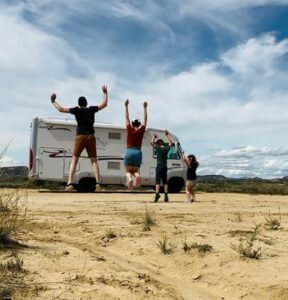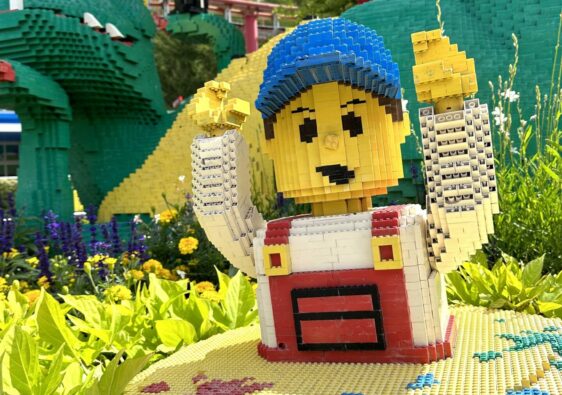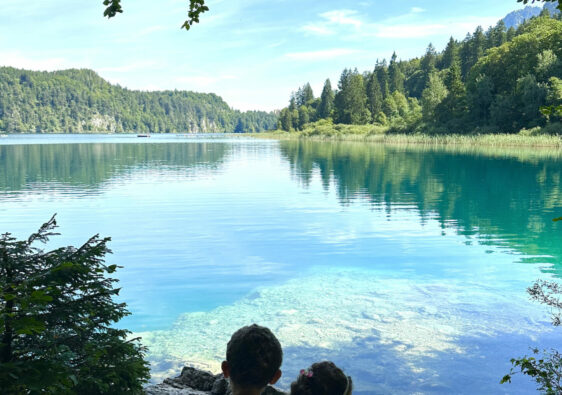A bit of history
This vast palace was once the summer residence of the electors and kings of Bavaria. Built in 1664 at the request of Elector Ferdinand Maria of Bavaria for the birth of the heir Max Emmanuel. In 1701, he had it expanded with lateral galleries and pavilions.
It was in this palace that Louis II of Bavaria was born. This summer residence witnessed many regents from the Wittelsbach family.
Visiting the Nymphenburg Park
The Nymphenburg Palace Park is fabulous! Free and open to everyone, you’ll find many Munich residents jogging there. This vast park, spanning several hectares in an English style, is located behind the Nymphenburg Palace and is a collection of pavilions, forests, lakes, and canals where children can feed the ducks and swans. It was designed by French landscape artists based on the model of Versailles.



When purchasing your ticket for the palace, be sure to get the combined ticket for the park as it grants you access to all the pavilions, which are otherwise inaccessible without it.
There are four pavilions:
Pavilion Die Badenburg
In this pavilion, you’ll be surprised to discover Roman baths, a ballroom, and an apartment with Chinese decoration. The visit begins with the ballroom and its beautiful woodwork before continuing to the baths, which feature a real heating system!
Pavilion Die Amalienburg
This small, independent palace is a pleasure and hunting lodge. The Hall of Mirrors in the center of this little chateau is spectacular. Designed to be independent of the rest of the Nymphenburg Palace, it also has a kitchen!
Pavilion Die Pagodenburg
The Pagoda Palace is located by the lake and next to a golf course. It was built as a resting place after games. It is decorated with porcelain and Chinese motifs, with a splendid blue and white ground floor. Upstairs, you’ll find two small rooms, one entirely decorated in a Chinese style.
Pavilion Die Magdalenenklause
The Hermitage of Magdalena is a small religious temple. It features an incredible chapel completely covered in shells with the chapel-grotto of Saint Mary Magdalene. Built deep in the park’s forest, it reveals austere, all-wooden rooms. The Magdalenenklause was constructed for contemplation and reflection: there is no lavish decoration or exuberance here.
A walk in the park is very pleasant, transitioning from forests to lakes. Plan for at least half a day to explore and visit all four pavilions.






Visiting Nymphenburg Palace
The interior of Nymphenburg Palace
The tour is conducted with an audio guide available in your language. The visit starts in the splendid Steinerner Saal, the grand ballroom with its immense windows, ceiling paintings, moldings, chandeliers, and checkered tile floor. The room is truly magnificent.
The main attraction is the room where King Ludwig II of Bavaria was born and the Gallery of Beauties. This beautiful room is adorned with 36 portraits commissioned by King Ludwig II, representing 36 women considered the most beautiful of the time. Unfortunately, not all of the palace is accessible, and the visit feels somewhat short compared to the park, as the rooms are sparsely furnished.
The Marstallmuseum
The Marstallmuseum is located in the former stables of the palace, in an annex wing. It houses one of the most important collections of carriages and equestrian culture in the world. Notably, it features a large collection of “sleigh” carriages, each more beautiful than the last, as well as an extensive collection of coaches and equestrian accessories. Highlights include the coronation coach of Emperor Charles VII and the ceremonial carriages of King Ludwig II.
The Porcelain Museum
On the first floor of the palace, you will find the Porcelain Museum, a private collection dating from the 18th to the 20th century. You can also visit the porcelain manufactory and shop outside the palace, though be aware it is closed on Sundays.






Practical information, hours, rates and where to park Your camper
Rates : Opt for the complete ticket which grants access to the palace, park, and museums for 15 euros at the full rate. This will be cheaper than purchasing separate tickets for each.
Hours : The palace and the Marstallmuseum are open daily from 9 AM to 6 PM during the summer and from 10 AM to 4 PM during the winter. You can find the full schedule and rates on the palace’s website.
Where to eat : You will find a small snack bar and a restaurant in the palace park, the Schlosscafé Palmenhaus. The prices are very reasonable for such a lovely restaurant, and the dishes are German specialties, which we highly recommend.
Where to park : There is a parking lot right in front of the palace entrance. For camper vans, there is no dedicated parking, but after contacting the palace, you can park for the day in the regular parking lot without any issue.
Things to do around Nymphenburg
The region around Munich is beautiful and full of villages to discover, castles, and lakes!
- Visit Munich: Only 5 km away, you can easily reach it by metro or bus.
- The Museum of Man and Nature: Located in the north wing of Nymphenburg Palace.
- BMW Museum: Just 5 km away and easily accessible by public transport.
- The German Museum: Located in Munich, it will particularly delight children with its focus on technology.
- A magical day at Legoland: About an hour’s drive away, check out our full article on Legoland Deutschland.
- Neuschwanstein and Hohenschwangau castles: Easily accessible from Munich by bus or organized tour if you prefer not to drive.






